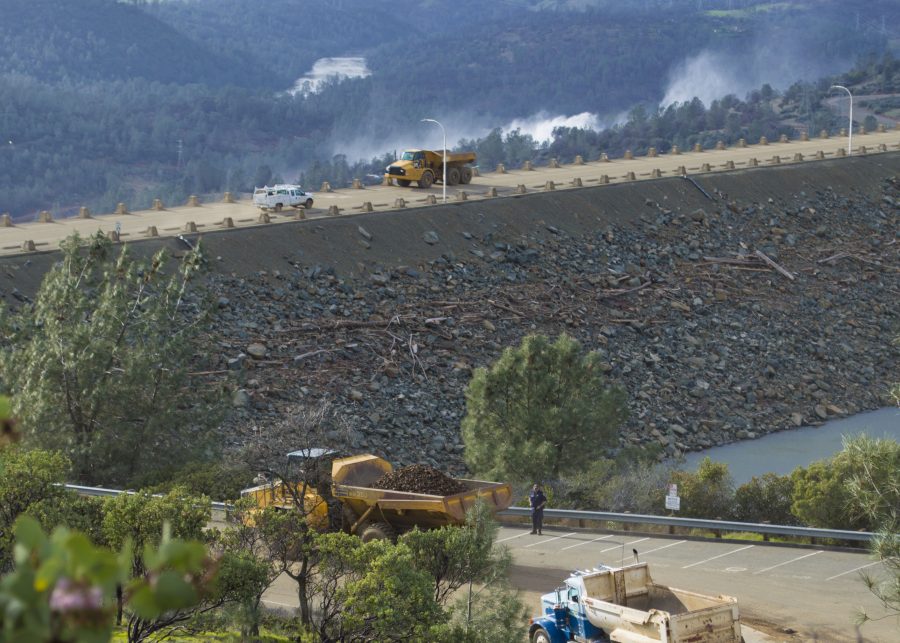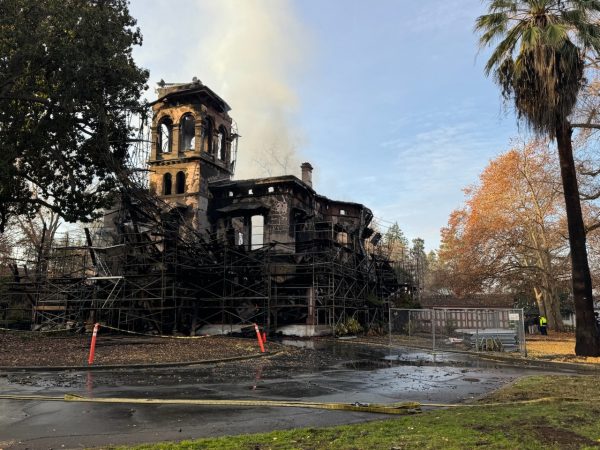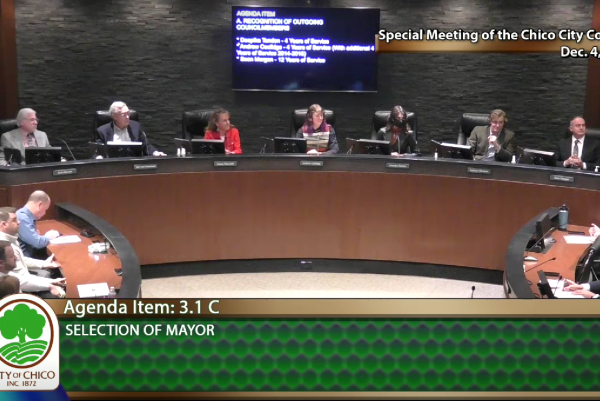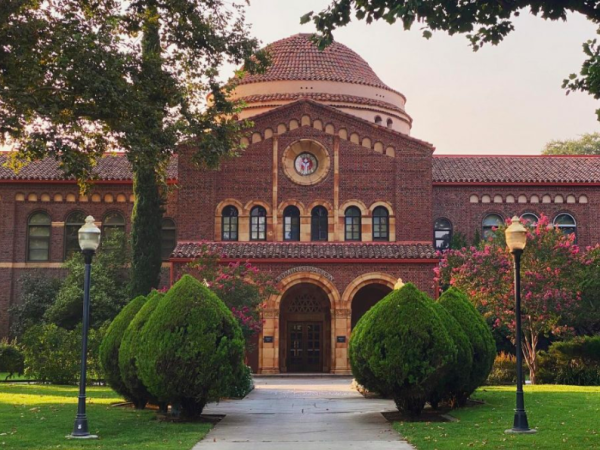Oroville Dam caught in dilemma
Various dump trucks transport rock and other materials to quickly repair the eroded spillways. Photo credit: Cortneanne Campbell
California’s reservoirs are caught in a conflict: water storage or flood prevention.
“They are trying to keep the water as high as possible while still doing flood control,” Steven Mehl said, department chair of civil engineering.
“It depends on how we want to operate our reservoirs,” Mehl said. “If the reservoirs are operated purely for flood control, then keep it down to its dead pool.”
This is not the case though and until recently California has been experiencing very dry years. The drought has put pressure on the state to store more water, Mehl said.
According to hydrology and environmental science professor David Brown, California’s water infrastructure is built to collect water that comes down from the snow packs, not heavy rainfall.
The emergency in Oroville started because of erosion to the main spillway. Brown said erosion is a constant threat to dams as water slowly damages the rock and concrete.
Oroville Dam is the largest water storage facility controlled by the state government. These dams allocate a certain amount of water to be released in order to prevent flooding. The federal government controls the amount allocated.
The dams currently use regulations on how much water to release to prevent flooding that are out of date, Brown said.
Brown also said Oroville Dam was built to withstand flows to its best ability at the time it was built. With the erosion in the main spillway the emergency spillway had to be used for the first time.
“A spillway is only used in an emergency and an emergency spillway is only used in a really big emergency,” Mehl said.
Mehl and Brown both explained that in a flooding incident in 1997 the dam withstood much greater flow rates. In the current incident the erosion hit the dam at a considerably lower flow rate than what the main spillway can normally handle.
With the increased climate extremes and possibility of increased rainfall over snowfall threatening the dam there are greater consequences to inaction, Mehl said.
While the spillway is being repaired in order to balance the competing functions of the dam Mehl says “Probably what they are going to have to do is reevaluate what are some of those operational rules for those reservoirs.”
Nicholas Feeley can be reached at [email protected] or @theorion_news on Twitter.








